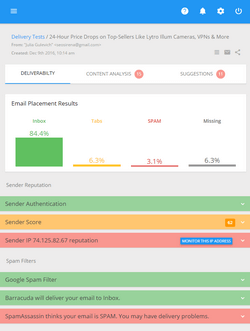Best Email Delivery Practices Gone Bad
OK, we’ve just described best email practices you should follow to pass as a good email marketer and get better delivery results. But you know there is nothing constant on the Internet. New methods are being adapted; old ones go out of date. Email delivery practices change as well. Email practices that were widely and successfully applied yesterday may not be so effective today.
With all that said, we feel it’s reasonable to get you familiar with email sending tactics that are no longer good. If you are using any of such tactics or may just be thinking about applying any of them, you may consider changing your mind and not engage into them.
So, here are some of the email practices that are no longer the best:
- The more IP addresses, the better. Many email marketers try to use as many IP addresses as possible when sending the email messages to large lists. This is a wrong approach because it’s often used by spammers. A good practice these days is to have one or two constant IP addresses and build trusted and reputable relationships with the recipients by sending opt-in newsletters from those IP addresses.
- The prettier HTML email design, the better. Not anymore. Today a simplified HTML email design is preferable because 1) not all email clients and web mail services render complex HTML code in the proper way, and 2) an email message stuffed with complex HTML effects is likely to be flagged as spam by ISP or client-based anti-spam filters. In addition, many recipients may use their mobile devices to view the emails. So, the best practice nowadays is to make the email message readable on a mobile device too. The text alternative of a HTML email should not be ignored either.
- The more secret and intriguing the Subject line, the better. Of course, the Subject line must tease people enticing them to open the email. But at the same time the Subject line must tell the recipients what the email is about. The Subject line is one of the factors that make the recipient either to open or delete the message. People may receive dozens of emails per day and if the Subject isn’t clear for them, the email is not likely to be opened.
- Personalized Subject line is better. In the past inserting the recipient’s name into the Subject line was a good practice. At present, it’s not. Spammers adopted this practice very well and are using it in every second message. Thus, it’s better if you just brand your Subject line by inserting your organization name.
By saying "best email practices gone bad" I didn’t mean that these approaches to email campaigns are not legitimate or forbidden. I just wanted you to be aware that they were no longer as effective as before and might even hurt your email campaign performance.
Table of contents | Page list for this chapter | Next page

